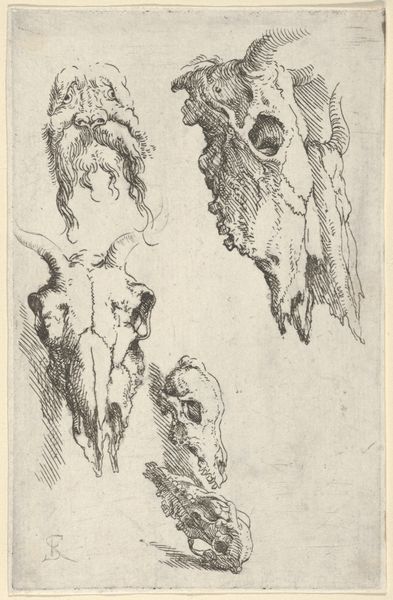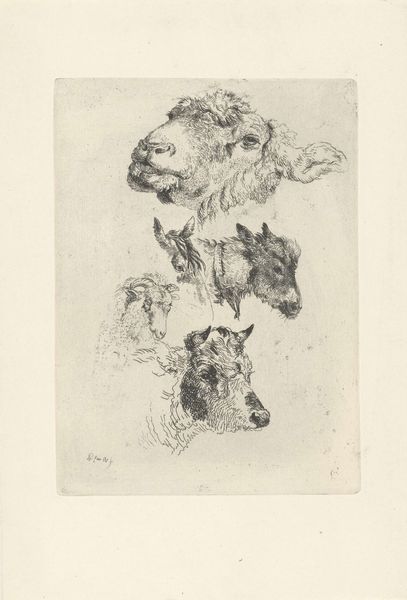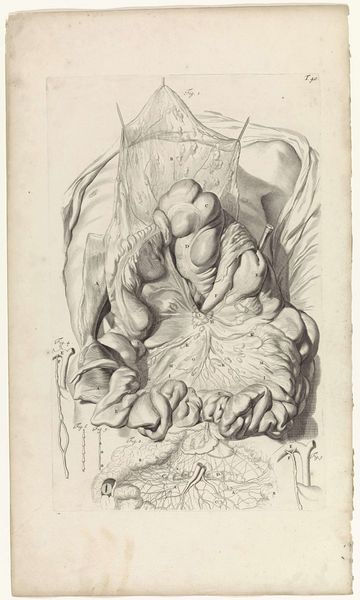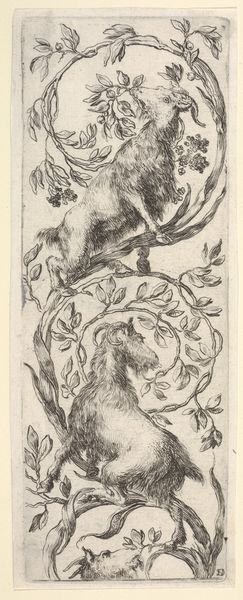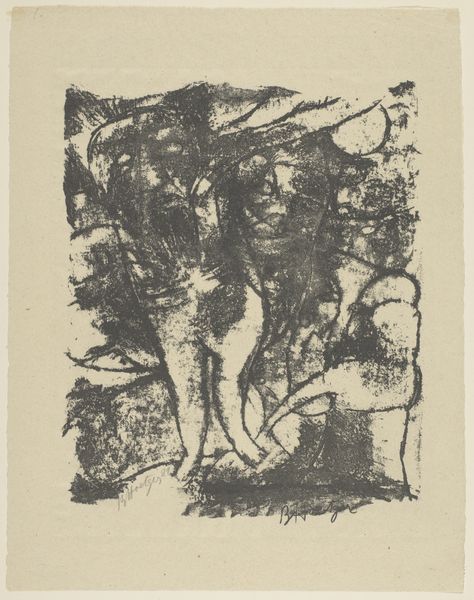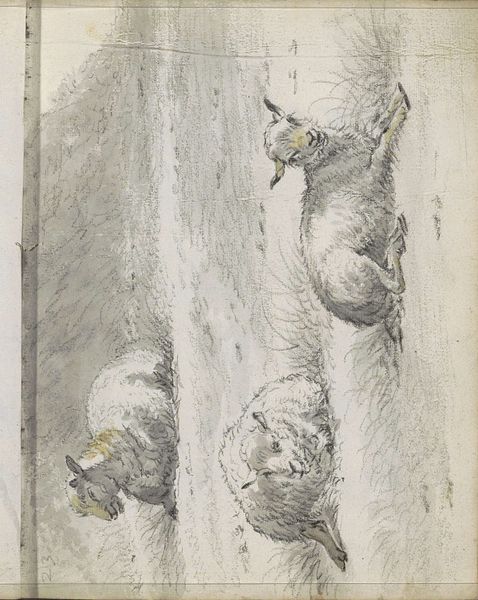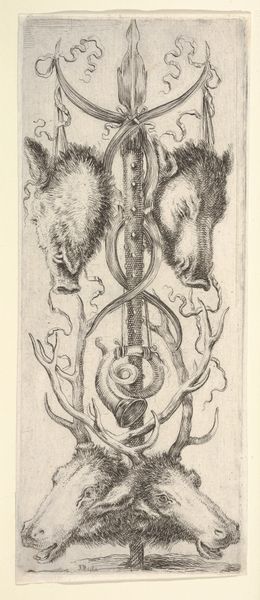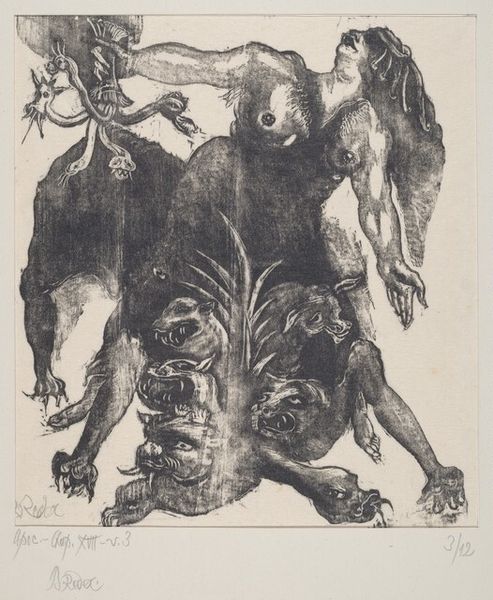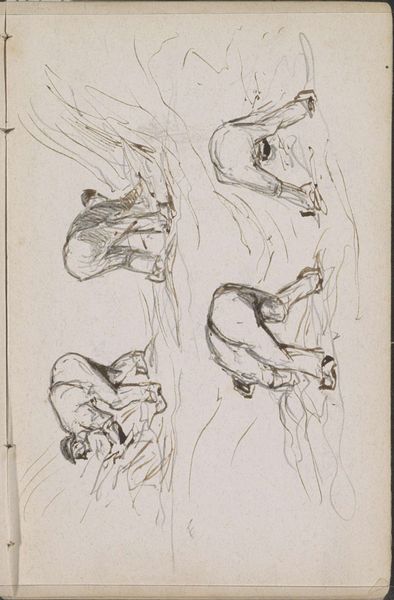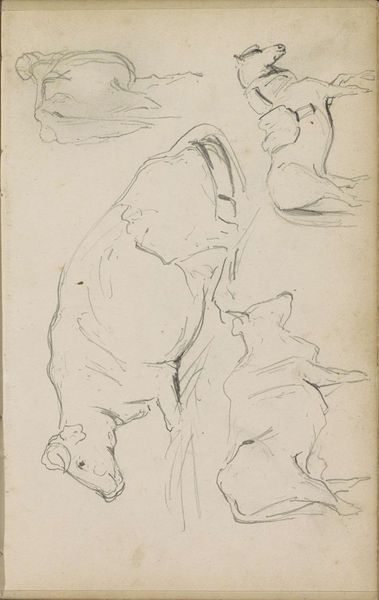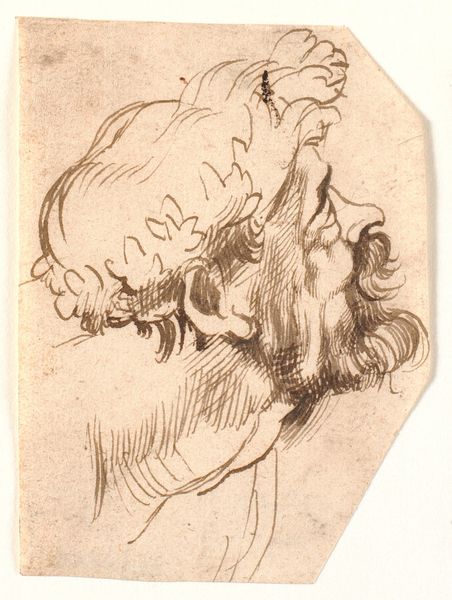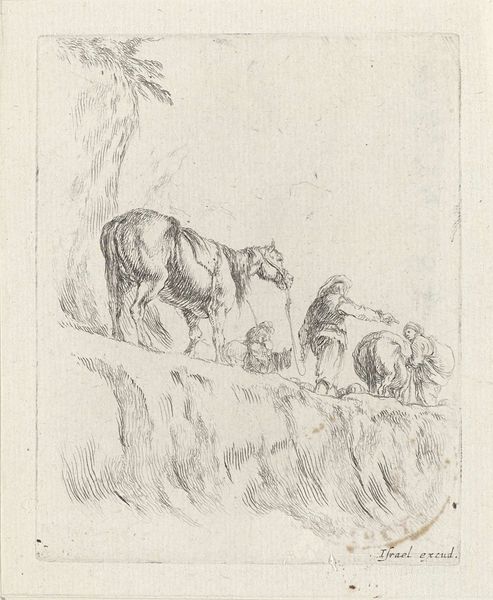
Two ox skulls and a portion of a third, study for "Democritus in Meditation" 1662
0:00
0:00
drawing, print, etching, ink
#
drawing
#
baroque
# print
#
pen sketch
#
etching
#
vanitas
#
ink
#
italian-renaissance
Dimensions: Sheet: 5 9/16 × 3 5/8 in. (14.2 × 9.2 cm)
Copyright: Public Domain
Curator: Looking at this, the mood that jumps out at me is undeniably somber. The skulls rendered with such stark, graphic lines, it feels like staring into the face of mortality. A heavy weight. Editor: Absolutely. We are looking at a piece titled "Two ox skulls and a portion of a third, study for "Democritus in Meditation," created in 1662 by Salvator Rosa, a fascinating figure of the Italian Baroque. Curator: Salvator Rosa… the name alone is theatrical. What a vibe. Tell me more. Editor: Rosa was an interesting and multi-talented artist who embodied that flamboyant Baroque temperament. He was very interested in themes of mortality, decay, and stoicism. Here he's using the Ox skull as an allegory. The inscription itself tells us that this print was conceived as a study for Democritus, who was himself interested in the material nature of being. Curator: It feels like such an intimate exploration. Given its function as a preparatory sketch, the etching and ink really let you feel the artist grappling with his own philosophical questions. Do you feel the 'vanitas' theme creeping in with the flora, maybe as the beginnings of undergrowth? Editor: It’s very probable. These memento mori would act as constant reminders for Democritus. And for us. And although seemingly stark, the way Rosa renders these bones makes me think of old reliquaries: it is decay but memorialized with immense craft, so its emotional resonance persists for us through time. A constant and deeply embedded association we all have of death connected to organic material. Curator: The Baroque really had a flair for this sort of psychological drama, didn't it? And it’s compelling. I can appreciate its impact—to create symbols that echo and shift, revealing deeper truths about what is permanent against the perishable… food for thought, truly! Editor: Precisely! It’s those enduring images that haunt and compel us to return to places like this museum and ask questions about our past. And our own fate.
Comments
No comments
Be the first to comment and join the conversation on the ultimate creative platform.
